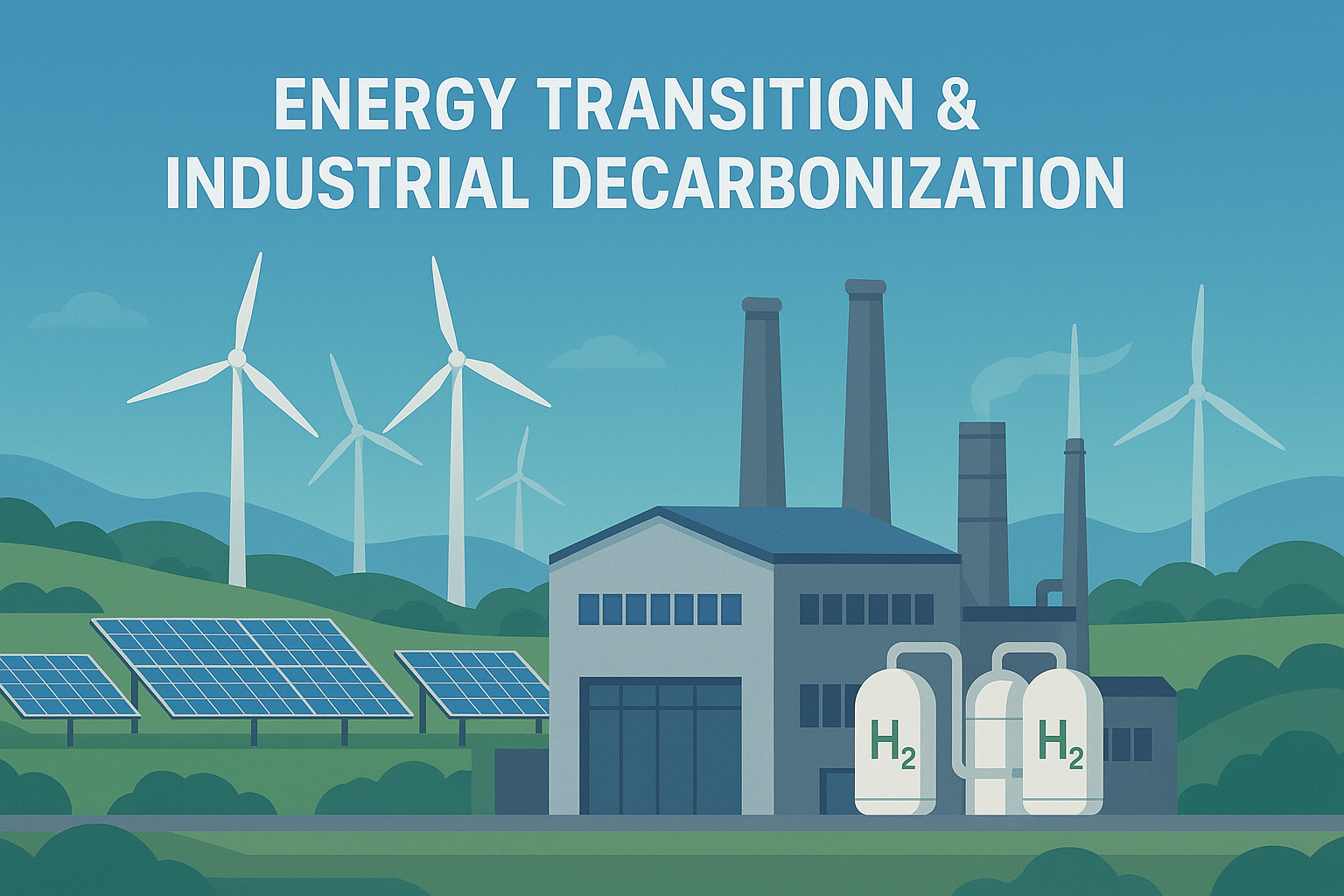The Industrial Decarbonization Imperative
Industry contributes roughly one-third of global CO₂ emissions — much of it from energy-intensive manufacturing and materials production. Reducing this footprint isn’t just about compliance; it’s about resilience, efficiency, and leadership in a low-carbon economy. Scope 3 supply chain emissions often account for over 90% of a company’s total carbon impact, making value chain collaboration vital.
Shifts Toward Renewables in Manufacturing
Factories are rapidly integrating renewable electricity through onsite solar and wind, Power Purchase Agreements (PPAs), and hybrid systems combining storage with grid access. As renewable costs drop, industrial electrification becomes increasingly viable and cost-effective.
Industrial heat decarbonization is progressing with:
- Electrified heating (induction, electric boilers)
- Solar thermal and heat pumps
- Renewable fuels like green hydrogen or bioenergy
- Thermal energy storage for flexible operation
For unavoidable emissions, carbon capture, utilization, and storage (CCUS) remains a critical bridge technology.
Reducing Carbon Footprints Across Supply Chains
- Supplier engagement and low-carbon procurement policies
- Circular materials and recycling initiatives
- Carbon-aware scheduling to align production with low-emission energy windows
- AI-driven tracking tools for emissions traceability and reporting
Automotive and chemical leaders like Mercedes-Benz are pioneering renewable carbon initiatives, replacing fossil feedstocks with recycled CO₂, biomass, and sustainable alternatives.
Policies & Projects Driving the Transition
- The U.S. Inflation Reduction Act directs billions toward decarbonizing heavy industry.
- The EU Clean Industrial Deal targets rapid renewable deployment and electrification.
- China is advancing integrated hydrogen and CCUS projects.
- Industrial clusters in California and Europe lead pilot demonstrations in steel, cement, and aluminum.
Challenges & Strategic Roadmap
Barriers: High upfront costs, tech immaturity, fragmented supply chains, and policy uncertainty slow adoption.
Action Steps for Industry:
- Baseline & Benchmark energy and emissions.
- Prioritize Efficiency—optimize processes and heat recovery first.
- Pilot & Scale—test electrification, CCUS, or hydrogen solutions.
- Engage Suppliers with clear carbon targets.
- Leverage Incentives through grants and partnerships.
- Monitor Progress using real-time data and carbon dashboards.
Key Takeaways
- Industrial decarbonization is essential for long-term competitiveness.
- Renewable electrification and smart energy use are the backbone of the transition.
- Scope 3 emissions require deep collaboration across value chains.
- Policy and innovation together will define the pace of change.
FAQ
Q: What makes industrial decarbonization different?
It targets the hardest-to-abate emissions from materials and process heat — beyond what’s addressed in general power sector decarbonization.
Q: Can all emissions be removed?
Not immediately. Some residual CO₂ will need CCUS or offsetting, but deep reductions are achievable.
Q: What’s the ROI timeline?
Efficiency pays back within a few years; large-scale projects like hydrogen or CCUS may take longer but are supported by growing incentives.
Sources
- U.S. DOE Industrial Decarbonization Roadmap Fact Sheet (2022)
- CAS Insights: Industrial Decarbonization
- RMI: Mapping the Path to Industrial Decarbonization
- AP News: U.S. Invests $6 Billion to Decarbonize Industry
- Accenture: Powered for Change 2025 Report
- ClimateSort: Supply Chain Decarbonization
- Autoweek: Mercedes-Benz Renewable Carbon Initiative
- Wam Morocco: Policy & Tech Trends Driving Industrial Decarbonization
- ScienceDirect: Industrial Sector Pathways to Net Zero

